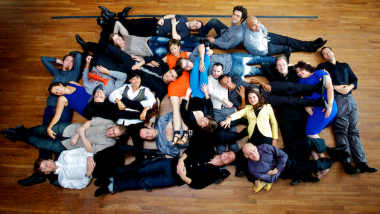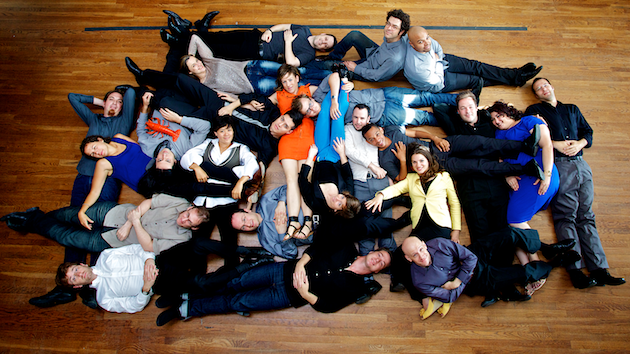
For centuries, people have debated how — and even whether — music is akin to language. Is it a universal language, for example, or more a set of quasi-linguistic, agreed-upon conventions? A few other possibilities were on offer Saturday evening during a performance by the International Contemporary Ensemble (ICE) at Stanford’s Bing Concert Hall.
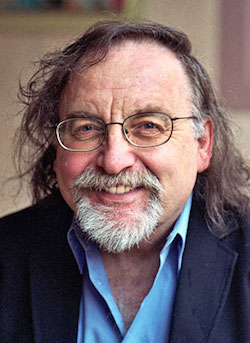
The program highlighted compositions by two Stanford faculty members: Brian Ferneyhough and Mark Applebaum. Ferneyhough has described music as an autonomous language that can nonetheless collide with other modes of expression. In On Stellar Magnitudes, his text setting focuses more on the sheer sound than the underlying meaning of words. At the same time, the text is not entirely devoid of meaning — it is overwhelmingly in English, and based upon names of real celestial bodies. Ferneyhough scored it for flute, clarinet, violin, cello, and piano, as well as voice (Alice Teyssier, soprano). Although Ferneyhough’s music is dauntingly complex, ICE made it shimmer, and Teyssier was especially impressive.
Applebaum offered the premiere of his Control Freak 3 as an homage to Ferneyhough. Control Freak is series of experimental works for vocal soloist and instrumental ensemble — in this case, an octet. In his newest installment, Applebaum uses text from K. Silem Mohammad’s Sonnagrams, a collection of absurd poems that were partially created by running Shakespeare’s sonnets through a computerized anagram engine.
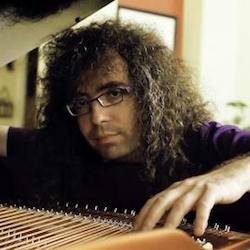
Like Mohammad’s poems, Applebaum’s piece oscillates between fixed meaning and spontaneity because it requires the performers to improvise responses to certain given materials. Applebaum conducted using hand signals, to which the instrumental performers reacted as they saw fit. In this whimsical performance, Steven Schick — virtuoso percussionist and the usual conductor of ICE— was the vocalist. As he narrated, sang, and made all manner of outlandish noise, you wondered whether there is anything that he cannot do well.
The rest of the program consisted of instrumental works. Seriousness, part of a six-work cycle called Sum = Parts, expressed Applebaum’s more cerebral side. In this aptly named string trio, an opening five-note motive organically reverberates throughout the work. It was well-performed and provoked intrigue about the larger cycle.
Therefore I was by Ashley Fure is another trio, for cello, percussion, and piano. The piece requires both traditional and unconventional techniques, such as running a bow over a cardboard box. The composer has described the work in terms of the “disassociation” she witnessed in her grandmother who suffered from Parkinson’s. The idea of physical strain seemed not only conceptual, it also extended into the performers’ breathing and other mechanics of their playing. Fure’s poignant work brought to mind a neurotic person struggling to find a sense of calm.
Speaking of calmness, the composer Anna Thorvaldsdottir has explained that her monosyllabic title Ró is an Icelandic word meaning “serenity.” In her piece for bass flute, bass clarinet, strings, piano, and percussion, layered, sustained pitches are punctuated by rustling woodwinds and thuds from a dampened piano. Slowly and almost meditatively, the performers conjured a deserted, broad landscape from which tentative melodic fragments eventually (and only ephemerally) emerged.
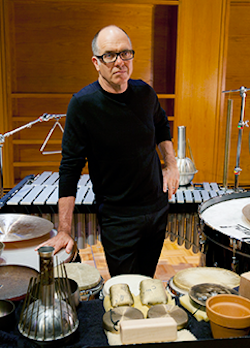
The closing piece was Steve Reich’s Pulse, written for 12 players. Reich has explained that he was trying to avoid changing keys in this piece. And as the name implies, a constant pulse anchors the entire work. The pulse is chiefly relegated to the piano, while the remaining instruments largely play in canon.
Before performing Reich’s work, Schick addressed current political events. He said that, for him, music is the language of resistance and of solidarity. Indeed, this seemed a suitable preface to all members of ICE joining forces to perform Reich’s repetitive piece that resists changing keys. Moreover, throughout the whole concert — and in spite of the day’s divisive politics — a university showcased two of its own faculty members, one colleague honored another, and old friends came together to create new music. Schick’s understanding of music as the language of both resistance and solidarity therefore suited the entire evening.

